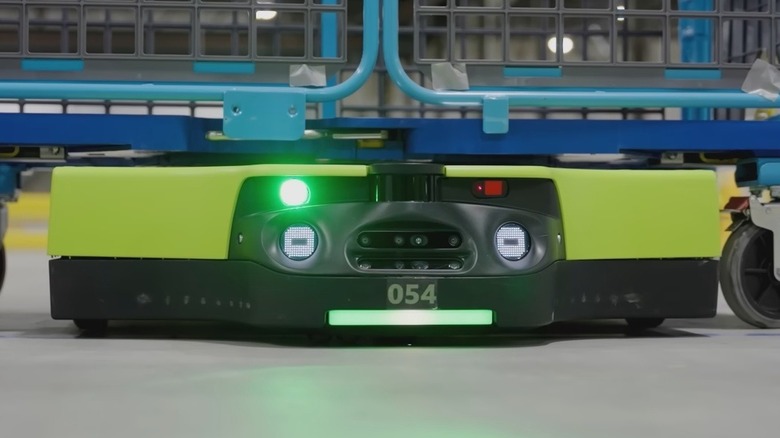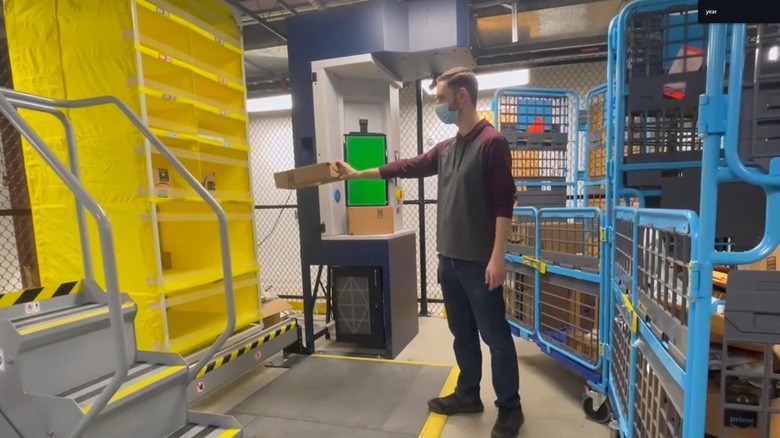Amazon Reveals Proteus, Its First Fully Autonomous Warehouse Robot
A decade after acquiring robot-maker Kiva, Amazon is giving a look at the fleet of robots operating inside its giant facilities, working side by side with human employees. Among the new additions is Proteus, the first fully autonomous robot deployed at its warehousing premises for moving around stacks of packages. The autonomous robot, which could easily be mistaken for a Roomba were it not for the sensor array on its insectoid body and the neon green paint job, doesn't need a rail-guided system to move around.
Proteus projects a beam of green light for navigation and object detection, and as soon as it spots a human being in the path, the robot comes to a halt. Thanks to that movement autonomy, it is not restricted to confined spaces in fulfillment centers and sorting areas. The robot slides under the base of Amazon's wheeled package carts known as GoCart and then lifts up to carry it around the facility.
Amazon says Proteus will "reduce the need for people to manually move heavy objects" while allowing them to "focus on more rewarding work." However, the company hasn't revealed exactly how much weight its autonomous robot can move around. Amazon isn't the only company working with autonomous robots. Ford deployed a self-driving robot called Survival at its factory to carry around parts back in 2019. Last year, Google revealed a fleet of more than 100 Everyday Robots at its campus to sort trash, clean tables, and keep the doors open.
There's more where that came from
In addition to Proteus, Amazon also revealed another new worker robot called Cardinal. This one is essentially a robotic arm that gently picks up a package from a heap, scans the code on the label, and neatly stacks it on a GoCart. Amazon says this machine reduces the chances of injuries that a human worker might sustain while handling heavy packages.
At the heart of Cardinal's scanning trick is computer vision technology, which also finds its way inside the company's cute Scout delivery robots. Cardinal, which is capable of handling up to 50 pounds worth of package load, is currently in the prototype stage and will only see mass deployment next year. The technology is useful in more than just warehouses, of course. Google is lending its computer vision expertise to Wendy's for smarter kitchens, for example.
Amazon has also created a robotic identification system that drastically speeds up the task of scanning and registering packages. Instead of holding a package and the attached label in front of a scanner, Amazon has employed a camera system that records footage at a frame rate of 120 fps. Dubbed Amazon Robotics Identification (AR ID), a worker simply needs to stand beside the setup and move packages from a stack to a GoCart. As a package is picked up and placed on the cart, the camera does its job of scanning and the large tablet-like screen underneath and gives a visual confirmation that the package has been logged.

